
Much like wine, whisky has its own lexicon of jargon and tasting note terms that can at first seem off putting but unlike wine, it's quite easy to pick up and learn about and it won't take you long before you're confidently using the terminology that comes hand in hand with enjoying a dram (another word for a glass of whisky).
Many of these words are tied to the romantic history of Scotland's national drink but many more have been borne of a necessity to create ways of describing processes unique to the whisky industry.
Angel's Share - The poetic nature of Scotch is never more apparent than in the use of this wonderful descriptor for the alcohol that evaporates from a cask as the whisky is maturing in a warehouse.
In the UK, the amount is around 2 per cent of each cask per year, due to our colder climate.
Age Statement - The confusion surrounding age statements - the age of the youngest component of the whisky i.e. a '12-years-old' on the label means the youngest whisky used is 12-years-old - has led to much argument over their use (or in a lot of cases, a lack there of), with many believing greater transparency is required when it comes to labeling.
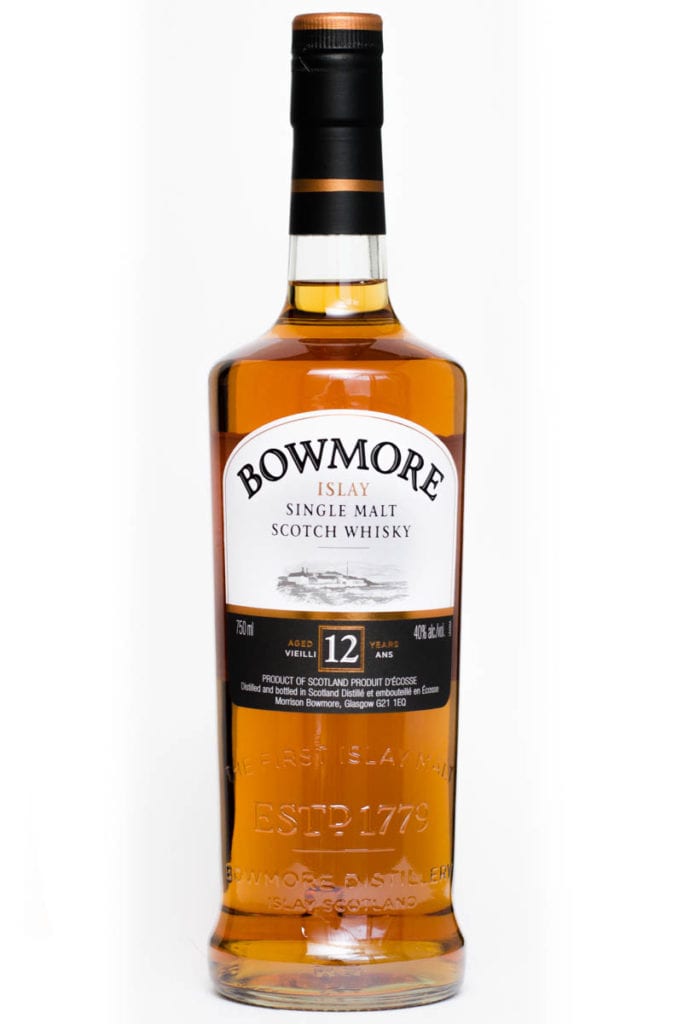

Any age statement will clearly be displayed on the bottle. Picture: Ccyyrree\Wikimedia
Bere Barley - pronounced "bear", this is a six-row barley - considered to be the UK's oldest cereal - which is currently cultivated mainly on Orkney, but also on some of the other islands and in some places in the northern highlands.
Blended whisky - this refers to a whisky which is made up of both single grains and and a number of single malts - these are blended together to create a complex whisky with desirable flavour profiles.
Blended Malt - this refers to a whisky that is made up only of malt whiskies from different distilleries, which are blended together, this type of whisky was previously known as a vatted malt.
Cask - the barrels which are used to store and mature the whisky, and are traditionally, and legally in Scotland must be, made using oak.
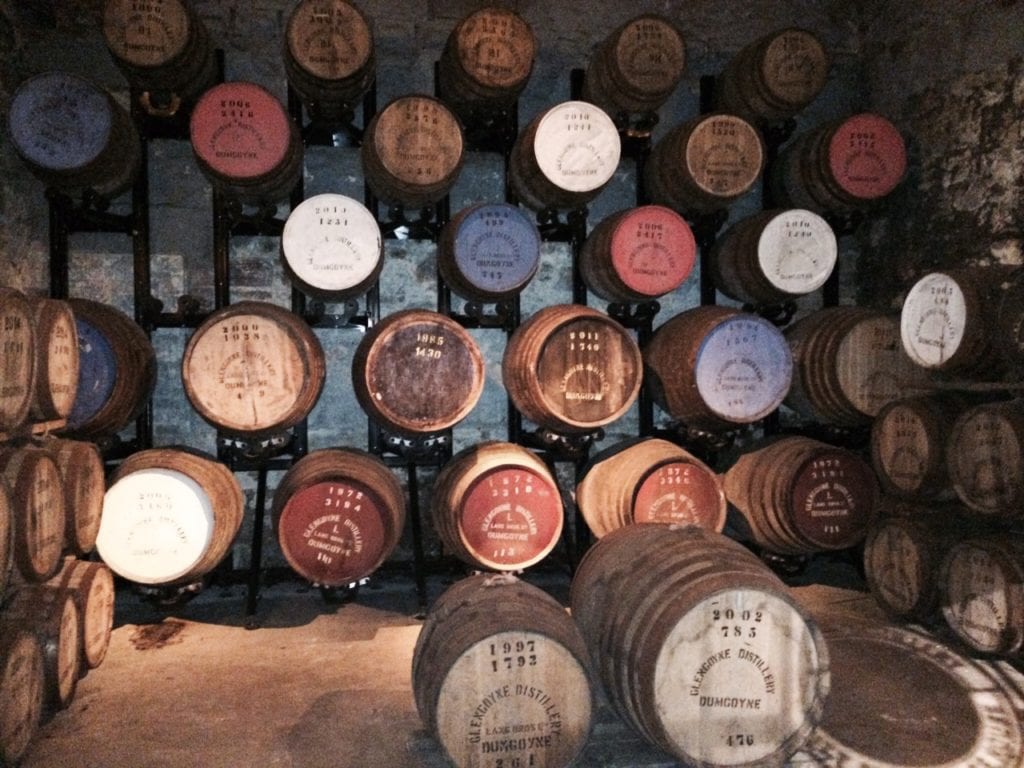

Cask strength - Scotch whisky is usually diluted to the required 40 per cent abv before being bottled, however, cask strength whisky is bottled directly from the cask, without dilution and can range from anywhere between 40 per cent and 65 per cent abv, depending on age - with younger whiskies tending to have a higher alcohol volume.
Cask finishing - A relatively new trend, this term is used to describe maturation where a whisky is transferred from the primary barrel which has been used to mature it, to a secondary, or even tertiary cask, for an additional maturation to create new flavours.
Coopering, Cooper, Cooperage - these terms refer to the act, person and building involved with creating, and the mending of, the casks used in maturation.
Copper Dog - an ingenious method used by distillery workers to smuggle whisky home using an old device made from copper tubing with a penny soldered to one end and cork in the other.
Dram - The traditional Scottish name for a measure or glass of whisky, which is said to have evolved for an old term for an apothecaries’ weight, usually agreed to be one eighth of an ounce.
Floor malting - Now found in very few distilleries (as most now buy their malt from outside sources), this is a term that refers to a traditional method for producing the malted barley required to make whisky.
Usually performed by hand it required the maltman and his team to lay the barley, which had been soaked in water, on a floor for around a week until germination starts to take place.
Hogshead - One of the many types of oak cask used to mature whisky, Hogsheads are usually approx. 220 to 250 litres.
Lyne arm - an arm that extends from the top of the copper still that carries the spirit vapours to the condenser where they are converted back into liquid.
Malted barley - One of the three key ingredients for whisky making, this is defined as barley which has been allowed to partially germinate - allowing the starch to convert to natural sugars - before being dried (kilned).
Mash Tun - A large vessel in which the milled malted barley (the grist) is combined with hot water thus allowing the fermentable sugars to dissolve.
Maturation - the act of aging whisky in oak casks to allow enough time for the spirit to engage with the wood, imparting flavours and character.
Monkey Shoulder - a term for a affliction that affected workers who were involved with the labour intensive duties of manually turning barley during the malting process.
New Make spirit - the newly distilled spirit that is yet to go through the minimum maturation period to legally become whisky (three years).
Nosing - The act of inhaling the aromas of a whisky before drinking.
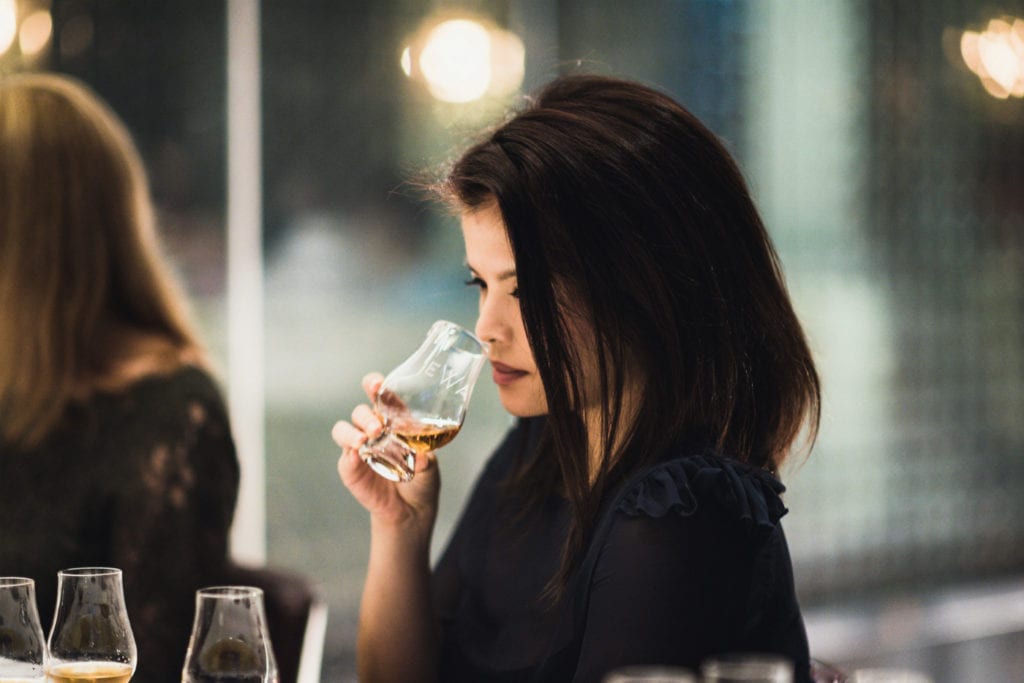

Nosing - The act of inhaling the aromas of a whisky before drinking. Picture: Edinburgh Whisky Academy
Pagoda Roof - Traditionally an important part of the malting process, theses pyramid shaped roofs were invented by architect Charles Doig and provided ventilation for the kiln where the malted barley is dried.
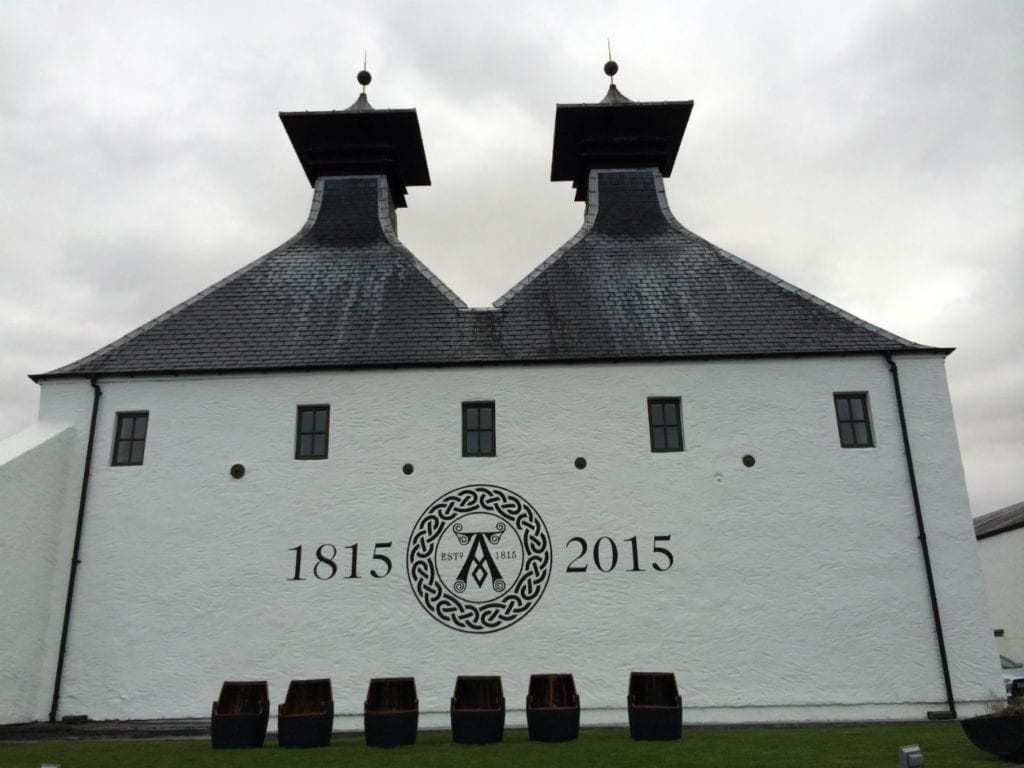

Peat - the unofficial fourth ingredient in many Scotch whiskies - Peat is partially decayed organic matter formed in the wetlands that is used to fuel the kiln, drying the malt and imparting a smokey flavour to the final whisky.
PPM - Phenol parts per million, a scale often used to represent how peaty a whisky is.
Pot Still - The type of still - almost exclusively made of copper - that is the most commonly used in the production of single malt whisky.
Quaich - pronounced “quake”, this is a traditional Scottish whisky drinking cup that consists of a shallow bowl with a short vertical handle on either side. It has important connotations with friendship and alliances and is often shared among a group to signify a celebration or connection.
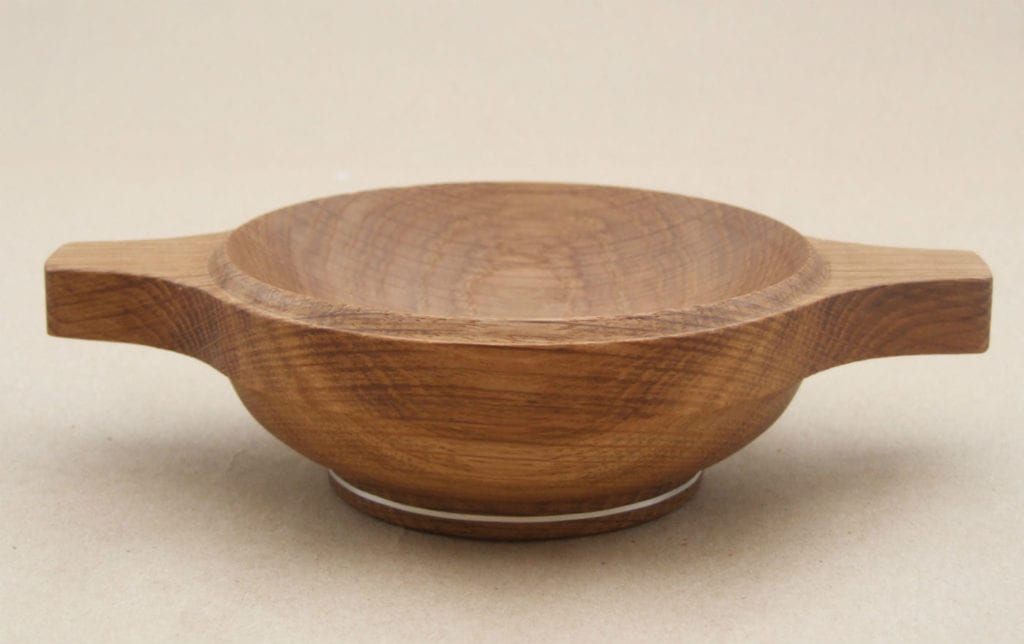

Picture: Stewart McCarroll\Wikimedia
Single malt - A whisky that is only produced in a single distillery and is made of 100 per cent malted barley.
Speyside - Scotland's largest (and arguably its most famous) whisky producing region. Described roughly as the area between Inverness and Aberdeen that surrounds the River Spey in Moray.
Spirit Safe - Made using brass and glass, the spirit safe is used to observe and analyse the spirit leaving the still.
Slàinte - Slàinte, pronounced slanj, or slàinte mhath (pronounced slanj uh va) means "Good Health" and is friendly Gaelic toast made before enjoying a whisky in company.
Uisage beatha - Gaelic term used to describe whisky which translates as “water of life".
Vatted malt - (see blended malt)
Valinch - A large pipette typically used to draw spirit for sampling from a cask, also known as the “dipping dog” or “whisky thief”.
Washback - A large deep tub or vat - traditionally made of wood - in which the fermentation process takes place in a distillery.
Worm tub - A more traditional form of condenser, the worm tub is a long downward spiralling copper pipe that is submerged in a wooden tub full of cold water. Only a small portion of distilleries still use them.
Wort - A warm and sugary solution that contains the soluble sugars from the malted barley dissolved in warm water. Wort is the liquid that goes forward to the fermentation process, where the sugars are changed to alcohol.


